Pissarro, Camille
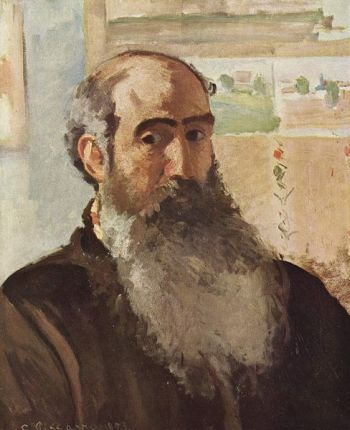 Jacob-Abraham-Camille Pissarro was born in what were the Danish West Indies in 1830. His father, Abraham Gabriel was from Portugal and his mother Rachel Manzano-Pomié from the Dominican Republic. His parents ran a dry-goods store and lived in an apartment above the store. Pissarro lived with his family in St. Thomas until he was twelve and went to boarding school in Paris.
Jacob-Abraham-Camille Pissarro was born in what were the Danish West Indies in 1830. His father, Abraham Gabriel was from Portugal and his mother Rachel Manzano-Pomié from the Dominican Republic. His parents ran a dry-goods store and lived in an apartment above the store. Pissarro lived with his family in St. Thomas until he was twelve and went to boarding school in Paris.
In 1849, he was back in St. Thomas. He was rarely without his sketchbook and was often seen around the port sketching coconut trees, plants, donkeys and their carts, native women doing chores and other aspects of island life. He met Fritz Melbye (1826-1869), a Danish painter. Melbye became Pissarro’s teacher and inspired him to transition from art as a hobby to art as a profession. Together they traveled to Venezuela and on to Paris.
While in Paris, Pissarro studied under Jean-Baptiste-Camille Carot, Gustave Courbet and Charles-Francois Daubigny. His parents put a caretaker in charge of their business and moved to Paris. They hired a young household maid from Burgandy, Julie Vellay, whom Camille would marry. They would have eight children but only six lived to adult-hood – Lucien, Georges, Felix, Ludovic-Rodolphe, Paul Emile and a daughter Jeanne. All of the Pissarro children would themselves become painters.
During the Franco-Prussian War of 1870-1871, he returned home to the islands to find his home occupied by the Prussian army. His home was used as a military butcher’s shop and many of his early works were destroyed by the soldiers who used the canvases as aprons.
In 1874, Pissarro and Monet organized several independent exhibitions. Exhibitors included Renoir, Alfred Sisley, Beliard, Guallaumin, Degas, Cezanne and Berthe Morisot. The critics loudly voiced their opposition – they saw impressionism as lacking technical detail and not accurately portraying the subject matter.
Camille Pissarro painted French life, particularly landscapes. Many of his paintings were set in Pontoise and Montmarte France. He often painted landscapes featuring peasants and laborers. He was a mentor to Paul Cezanne, Paul Gaugion and Matisse. After viewing a painting by a young Matisse, Pissarro said, “Very good, my friend, you are gifted. Work, and don’t listen to anything anyone tells you.” Mary Cassatt (1844–1926) said of Pissarro, “He was such a teacher that he could have taught stones to draw correctly.”
He is considered the primary developer of Impressionist technique though Monet and his work would become more well known. Pissarro was well-respected by his contemporaries and suffered financial difficulties throughout his career due to his steadfast support of the Impressionist movement. He did however, live long enough to see his paintings start to bring in high auction prices and his art and impressionist style become valued among younger artists.
Camille Pissarro left a legacy of paintings in oil and water-colors, gouaches and pastels, thousands of sketches and drawings and a great number of etchings and lithographs. He was a self-taught artist when it came to creating etchings and created far more of the works than most of his contemporaries.
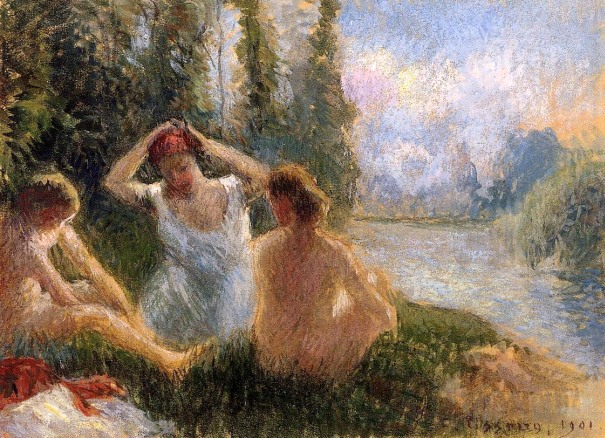
…by the famous artist Camille Pissarro Signed and dated by Pissarro in 1901, this landscape painting by the French Impressionist depicts four young women sitting on the banks of a river. In various states of dress, the ladies are completely…
Read more
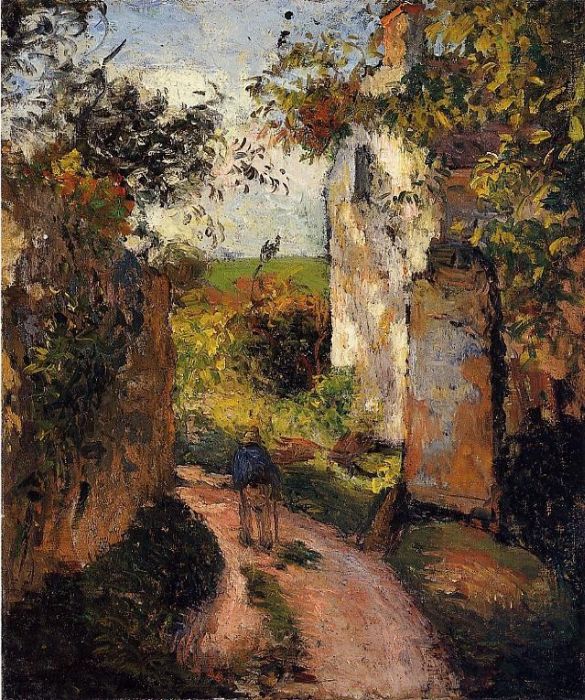
…by the famous artist Camille Pissarro Painted in 1876, by the famous artist Camille Pissarro (1830-1903), this painting on canvas depicts a tired-looking peasant walking down a country lane. Our Camille Pissarro biography shares some insight into the artist himself…
Read more
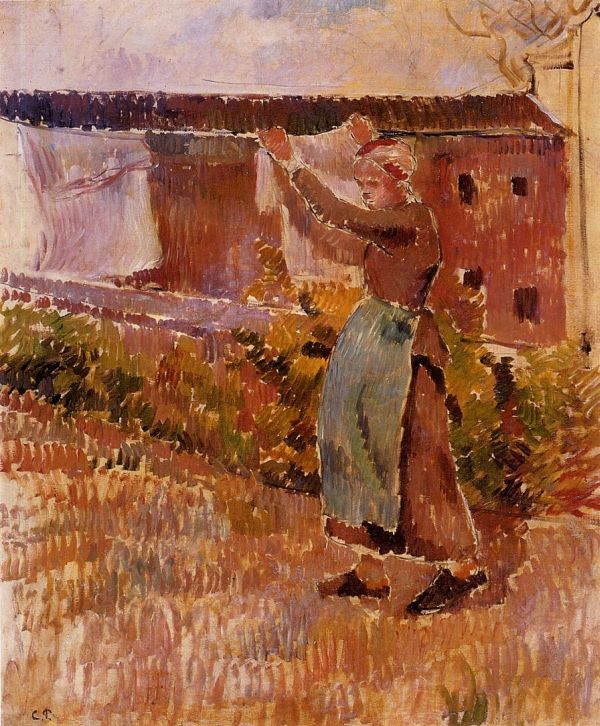
…by the famous artist Camille Pissarro Impressionist landscape painting by the famous artist Camille Pissarro (1830-1903) depicting a woman hanging her wash out to dry. Pissarro completed this painting in 1887. This appears to be the entire study from this…
Read more
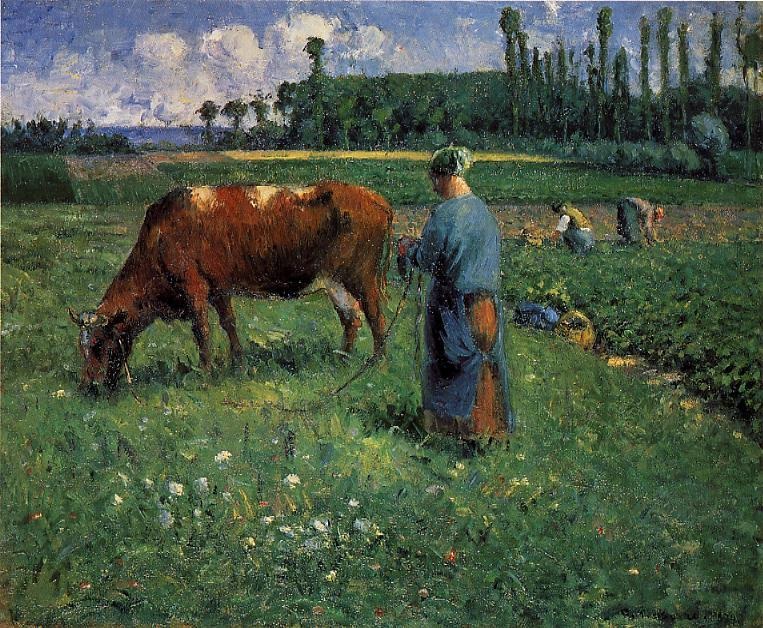
…by the famous artist Camille Pissarro The title of this impressionist landscape painting by the famous artist Camille Pissarro (1830-1903) is fairly self-explanatory. While others labor nearby in the fields, a young girl dressed in blue tends to a pretty…
Read more
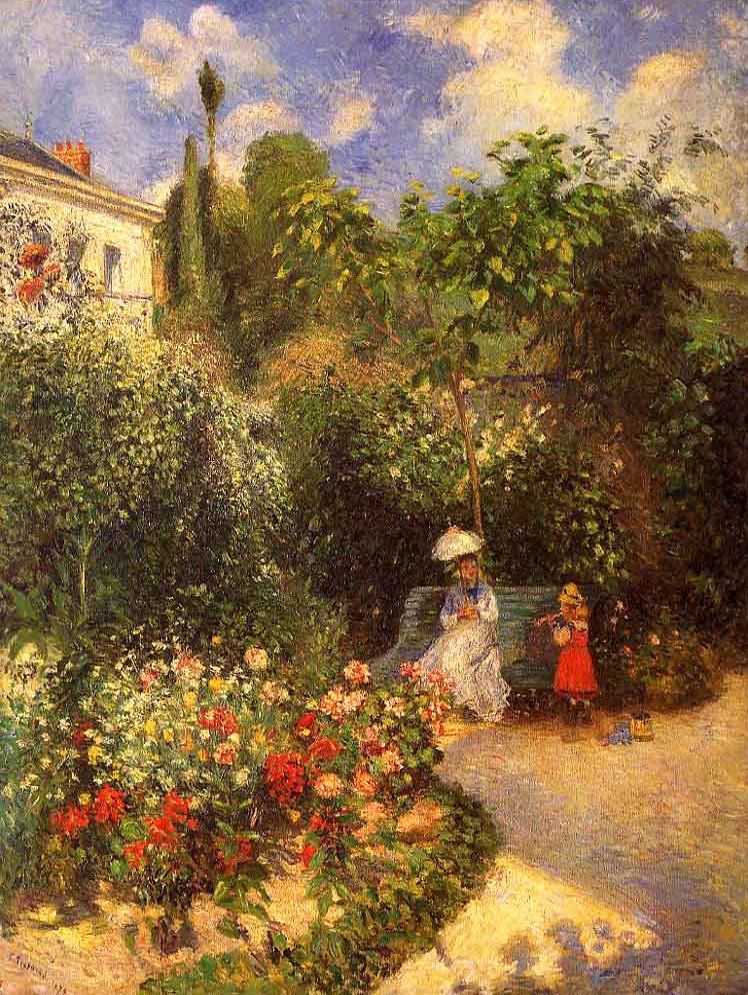
A pretty, sunny day in a rose garden is the focal point of this landscape painting by the famous artist Camille Pissarro (1830-1903). Pissarro turned this impressionist landscape painting into something much more interesting than a simple painting of a…
Read more
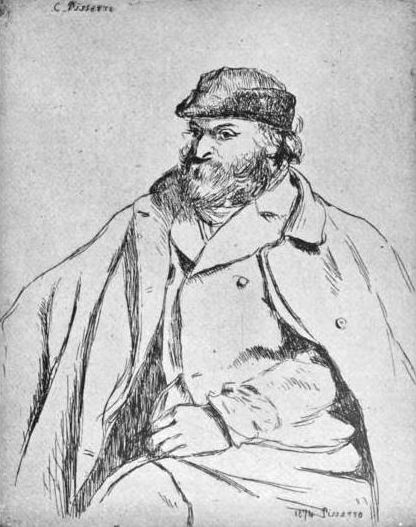
Etching of the artist Paul Cézanne (1839-1906) by his friend Camille Pissarro (1830-1903). In this etching, Cezanne is depicted wearing the shepherd’s garment he often wore on cold mornings when he went outside to paint. Cezanne is known for his…
Read more
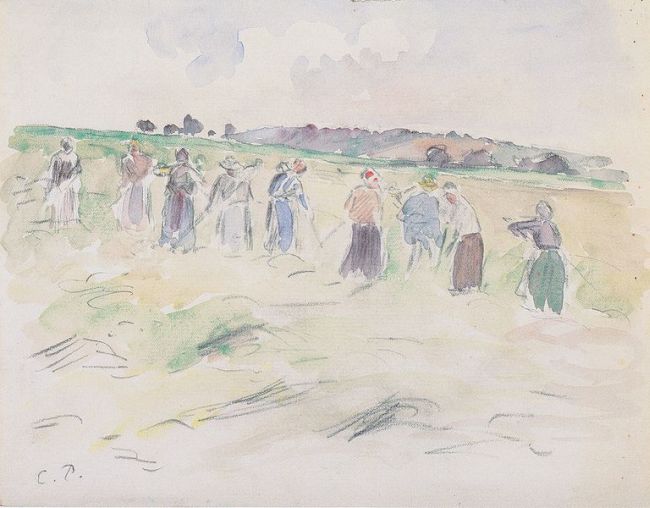
…by the famous artist Camille Pissarro Pastoral watercolor by Camille Pissarro (1830-1903) depicting the harvest of hay. The painting is made even more interesting by the original pencil sketch lines creating depth in the landscape. You can learn more about…
Read more
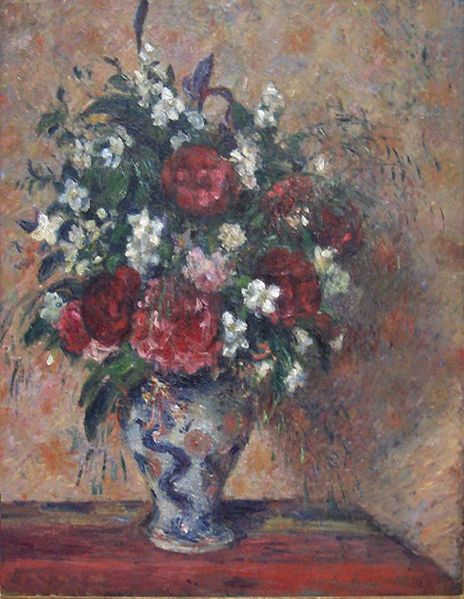
Although born in the Danish West Indies, Camille Pissarro (1830-1903) is generally thought of as a French painter. Pissarro played a significant role within the Impressionist movement though his work is a bit overshadowed by the more well-known Monet. This…
Read more
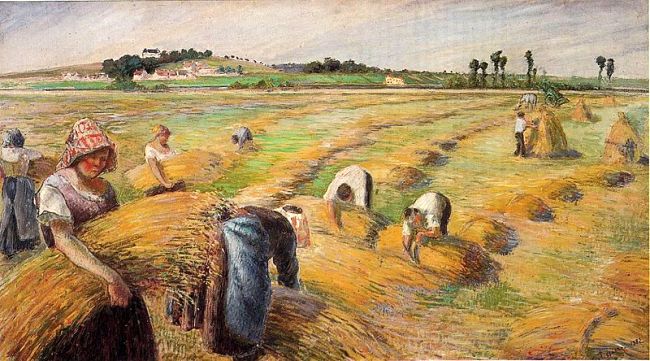
This oil painting on canvas was painted by the artist Camille Pissarro (1830-1903) in 1882. I really like this work. While it does depict a group of men and woman working hard to bring in the hay harvest, it does…
Read more
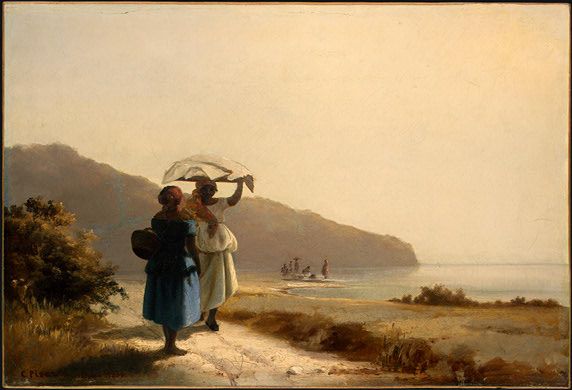
Camille Pissarro (1830-1903) painted this oil on canvas in 1856. Two Women Chatting by the Sea depicts two women from St. Thomas standing on the shoreline having a conversation. The two women are standing on a beach all but deserted…
Read more

 Jacob-Abraham-Camille Pissarro was born in what were the Danish West Indies in 1830. His father, Abraham Gabriel was from Portugal and his mother Rachel Manzano-Pomié from the Dominican Republic. His parents ran a dry-goods store and lived in an apartment above the store. Pissarro lived with his family in St. Thomas until he was twelve and went to boarding school in Paris.
Jacob-Abraham-Camille Pissarro was born in what were the Danish West Indies in 1830. His father, Abraham Gabriel was from Portugal and his mother Rachel Manzano-Pomié from the Dominican Republic. His parents ran a dry-goods store and lived in an apartment above the store. Pissarro lived with his family in St. Thomas until he was twelve and went to boarding school in Paris.







